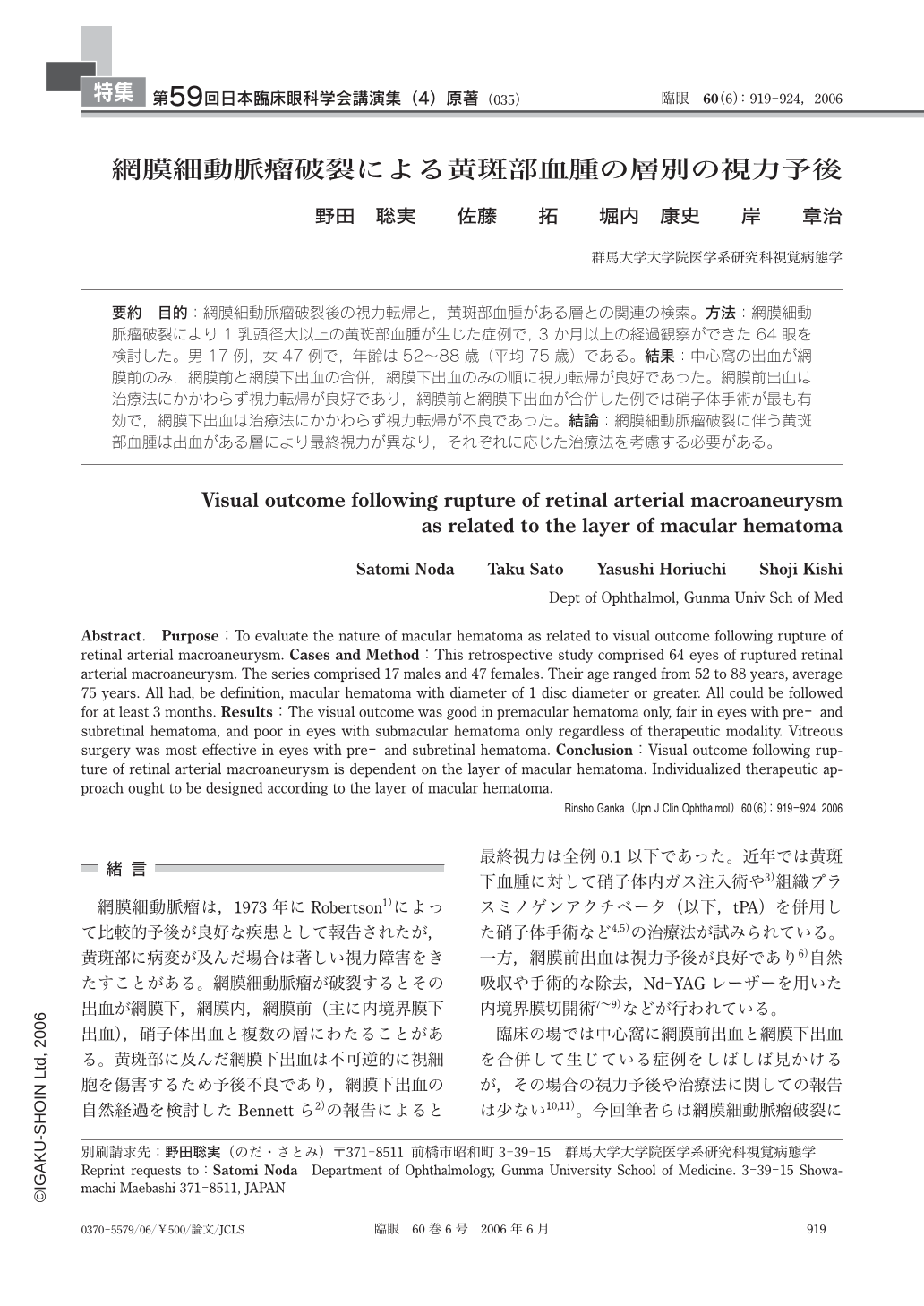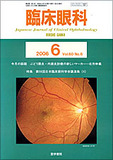Japanese
English
- 有料閲覧
- Abstract 文献概要
- 1ページ目 Look Inside
- 参考文献 Reference
目的:網膜細動脈瘤破裂後の視力転帰と,黄斑部血腫がある層との関連の検索。方法:網膜細動脈瘤破裂により1乳頭径大以上の黄斑部血腫が生じた症例で,3か月以上の経過観察ができた64眼を検討した。男17例,女47例で,年齢は52~88歳(平均75歳)である。結果:中心窩の出血が網膜前のみ,網膜前と網膜下出血の合併,網膜下出血のみの順に視力転帰が良好であった。網膜前出血は治療法にかかわらず視力転帰が良好であり,網膜前と網膜下出血が合併した例では硝子体手術が最も有効で,網膜下出血は治療法にかかわらず視力転帰が不良であった。結論:網膜細動脈瘤破裂に伴う黄斑部血腫は出血がある層により最終視力が異なり,それぞれに応じた治療法を考慮する必要がある。
Purpose:To evaluate the nature of macular hematoma as related to visual outcome following rupture of retinal arterial macroaneurysm. Cases and Method:This retrospective study comprised 64 eyes of ruptured retinal arterial macroaneurysm. The series comprised 17males and 47 females. Their age ranged from 52 to 88 years,average 75 years. All had,be definition,macular hematoma with diameter of 1 disc diameter or greater. All could be followed for at least 3months. Results:The visual outcome was good in premacular hematoma only,fair in eyes with pre- and subretinal hematoma,and poor in eyes with submacular hematoma only regardless of therapeutic modality. Vitreous surgery was most effective in eyes with pre- and subretinal hematoma. Conclusion:Visual outcome following rupture of retinal arterial macroaneurysm is dependent on the layer of macular hematoma. Individualized therapeutic approach ought to be designed according to the layer of macular hematoma.

Copyright © 2006, Igaku-Shoin Ltd. All rights reserved.


